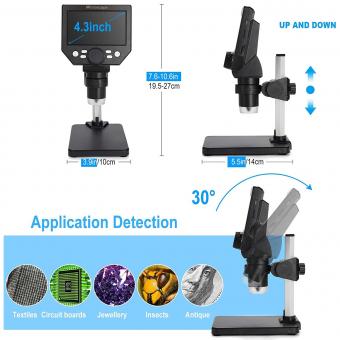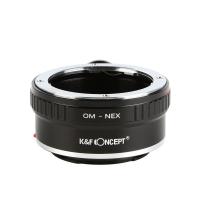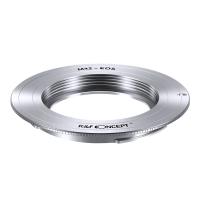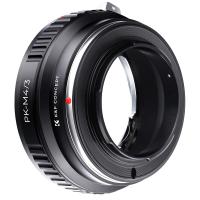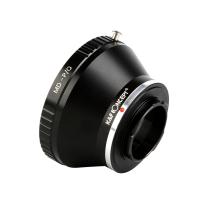Are Microscopes With 2500x Magnification Any Good ?
Microscopes with 2500x magnification can be quite good for certain applications. This level of magnification allows for detailed observation of small structures and organisms, making it suitable for various scientific and research purposes. However, the quality and performance of a microscope depend on various factors beyond just magnification, such as the optics, lighting, and overall design. It is important to consider the specific requirements of your intended use and choose a microscope that meets those needs. Additionally, factors like resolution, image clarity, and ease of use should also be taken into account when evaluating the overall quality of a microscope.
1、 Resolution and Clarity: Evaluating the image quality at 2500x magnification.
Resolution and Clarity: Evaluating the image quality at 2500x magnification.
Microscopes with 2500x magnification can be quite useful in certain applications, but their effectiveness ultimately depends on various factors. One crucial aspect to consider is the resolution and clarity of the image produced at this magnification level.
At 2500x magnification, the resolution and clarity of the image become critical for accurate observation and analysis. The higher the magnification, the more details can be observed, but it also becomes more challenging to maintain image quality. Therefore, it is essential to evaluate the microscope's ability to provide clear and sharp images at this level.
Advancements in technology have significantly improved the resolution and clarity of microscopes over the years. Modern microscopes with 2500x magnification often incorporate high-quality optics, advanced imaging techniques, and digital enhancements to enhance image quality. These improvements have made it possible to achieve better resolution and clarity, allowing researchers and scientists to observe finer details with greater precision.
However, it is important to note that achieving optimal resolution and clarity at 2500x magnification may still pose challenges. Factors such as the quality of the microscope's optics, lighting conditions, and specimen preparation can impact the image quality. Additionally, the user's expertise in microscope operation and image analysis also plays a crucial role in obtaining the best possible results.
In recent years, there have been significant advancements in microscopy techniques, such as super-resolution microscopy, which can surpass the traditional limits of resolution. These techniques enable researchers to observe structures and processes at the nanoscale level, providing even greater detail and clarity.
In conclusion, microscopes with 2500x magnification can be valuable tools for various applications, but their effectiveness depends on the resolution and clarity of the images they produce. With advancements in technology and microscopy techniques, it is possible to achieve high-quality images at this magnification level. However, it is essential to consider various factors and ensure proper specimen preparation and microscope operation to maximize the resolution and clarity of the observed images.
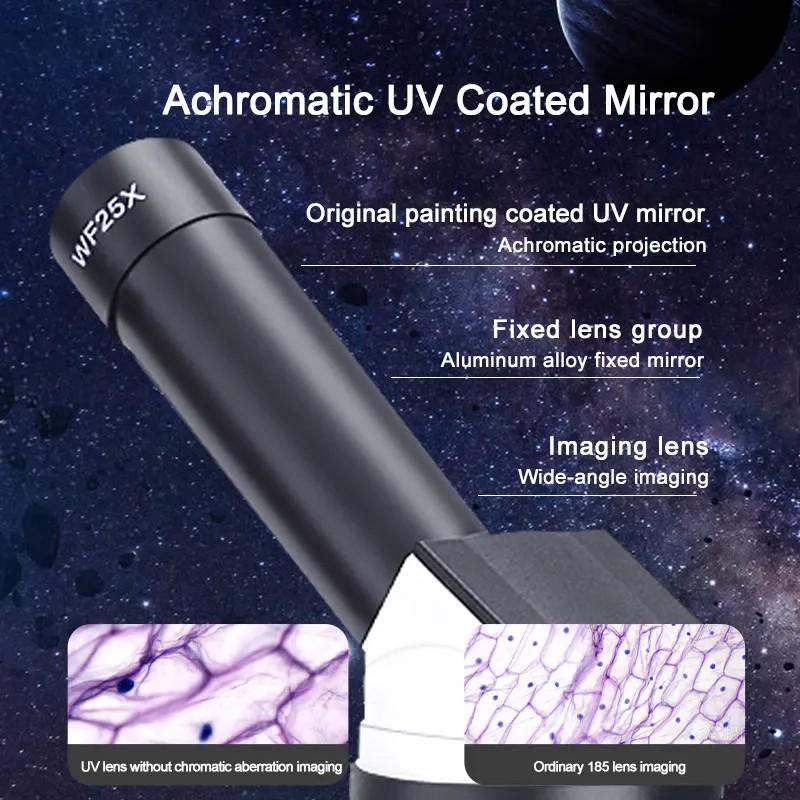
2、 Optics and Lens Quality: Assessing the performance of the microscope's lenses.
Microscopes with 2500x magnification can be good, but their effectiveness depends on various factors, including the optics and lens quality. The magnification power alone does not determine the overall quality of a microscope.
Optics and lens quality play a crucial role in the performance of a microscope. High-quality lenses with excellent optical properties can provide clear and sharp images at high magnifications. These lenses should have minimal aberrations, such as chromatic aberration and spherical aberration, which can distort the image and reduce clarity.
Additionally, the quality of the optics and lenses affects other important aspects of a microscope, such as resolution and depth of field. A microscope with good optics can provide high-resolution images, allowing for detailed examination of specimens. It can also offer a larger depth of field, enabling better focus on different layers of the specimen.
However, it is important to note that the latest point of view in microscopy technology suggests that magnification alone may not be the most critical factor. Other factors, such as the numerical aperture (NA) of the lenses and the quality of the light source, also contribute to the overall performance of a microscope. The NA determines the microscope's ability to gather light and resolve fine details. A higher NA can enhance the resolution and image quality, even at lower magnifications.
In conclusion, microscopes with 2500x magnification can be good if they have high-quality optics and lenses. However, it is essential to consider other factors, such as resolution, depth of field, and numerical aperture, to assess the overall performance of a microscope. The latest advancements in microscopy technology emphasize the importance of these factors in achieving optimal imaging results.

3、 Illumination and Contrast: Examining the lighting and contrast capabilities for clear visualization.
Microscopes with 2500x magnification can be quite useful for various applications, but their effectiveness depends on several factors. One crucial aspect to consider is the illumination and contrast capabilities of the microscope.
Illumination plays a vital role in microscopy as it determines the clarity and visibility of the specimen. A microscope with good illumination ensures that the sample is evenly lit, allowing for detailed examination. Additionally, proper illumination helps to enhance contrast, making it easier to distinguish different structures within the specimen. This is particularly important when studying transparent or translucent samples.
Contrast is another critical factor in microscopy. It refers to the ability of the microscope to differentiate between different parts of the specimen. A microscope with high contrast capabilities can reveal fine details and subtle variations in the sample, leading to more accurate observations and analysis.
Advancements in technology have significantly improved the illumination and contrast capabilities of microscopes. Modern microscopes often come equipped with advanced lighting systems, such as LED or halogen illumination, which provide bright and uniform lighting. Additionally, techniques like phase contrast or differential interference contrast microscopy can enhance contrast, making it easier to visualize transparent or unstained samples.
However, it is important to note that while a microscope with 2500x magnification can provide high-resolution images, it may not be suitable for all applications. Extremely high magnification can sometimes result in a loss of image quality, such as reduced depth of field or increased noise. Therefore, it is essential to consider the specific requirements of your research or application before determining if a microscope with 2500x magnification is suitable.
In conclusion, microscopes with 2500x magnification can be valuable tools for various scientific and research purposes. However, their effectiveness depends on the illumination and contrast capabilities, which determine the clarity and visibility of the specimen. With advancements in technology, modern microscopes offer improved lighting systems and contrast enhancement techniques, enhancing the overall performance of the microscope. Nonetheless, it is crucial to consider the specific requirements of your application to determine if a microscope with 2500x magnification is the right choice.

4、 Ergonomics and User-Friendliness: Considering the ease of use and comfort during operation.
Microscopes with 2500x magnification can be quite useful in certain applications, but their effectiveness depends on various factors. One important aspect to consider is ergonomics and user-friendliness.
Ergonomics refers to the design of the microscope in terms of user comfort and efficiency. A microscope that is ergonomically designed will have features such as adjustable eyepieces, comfortable viewing angles, and easy-to-use controls. These factors are crucial for long hours of use, as they can reduce strain on the user's eyes, neck, and back. Additionally, a user-friendly microscope will have intuitive controls and a clear user interface, making it easier for users to operate and navigate through different settings.
In terms of effectiveness, a microscope with 2500x magnification can provide high-resolution images, allowing users to observe fine details and structures that may not be visible with lower magnification microscopes. This level of magnification is particularly useful in fields such as biology, pathology, and material science, where precise examination of small samples is required.
However, it is important to note that higher magnification does not always guarantee better image quality. Factors such as the quality of the microscope's optics, lighting conditions, and sample preparation techniques also play a significant role in the overall image clarity and resolution. Therefore, it is essential to consider these factors in conjunction with the magnification level when evaluating the effectiveness of a microscope.
In recent years, advancements in technology have led to the development of digital microscopes with high magnification capabilities. These microscopes often come with additional features such as image capture and analysis software, allowing users to document and analyze their observations more effectively. This integration of digital capabilities has further enhanced the user-friendliness and functionality of microscopes with 2500x magnification.
In conclusion, microscopes with 2500x magnification can be highly effective tools in various scientific and research applications. However, their usefulness is not solely determined by magnification level but also by factors such as ergonomics, user-friendliness, and overall image quality. Therefore, it is important to consider these aspects when evaluating the suitability of a microscope for specific needs.














